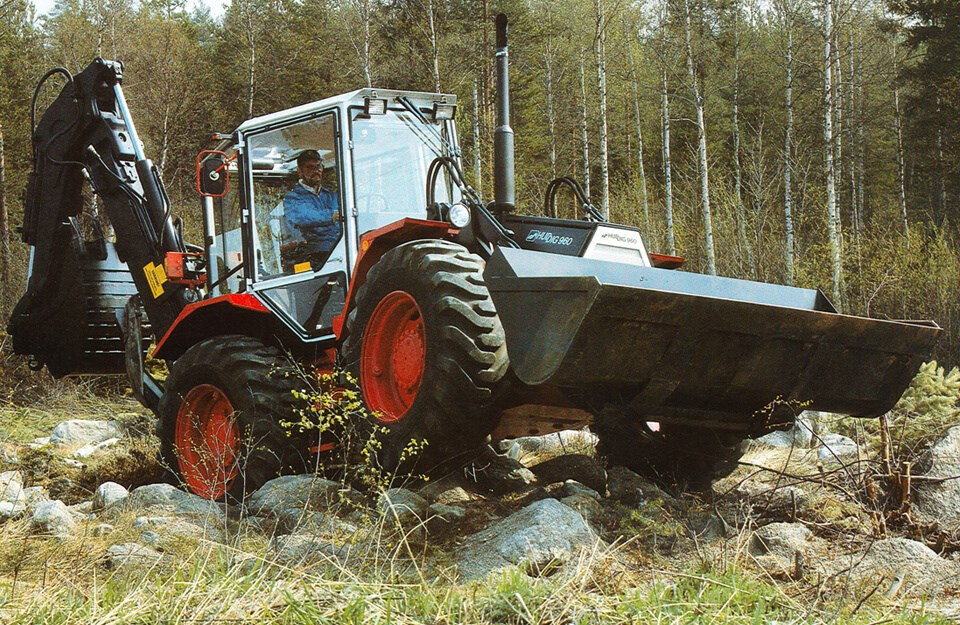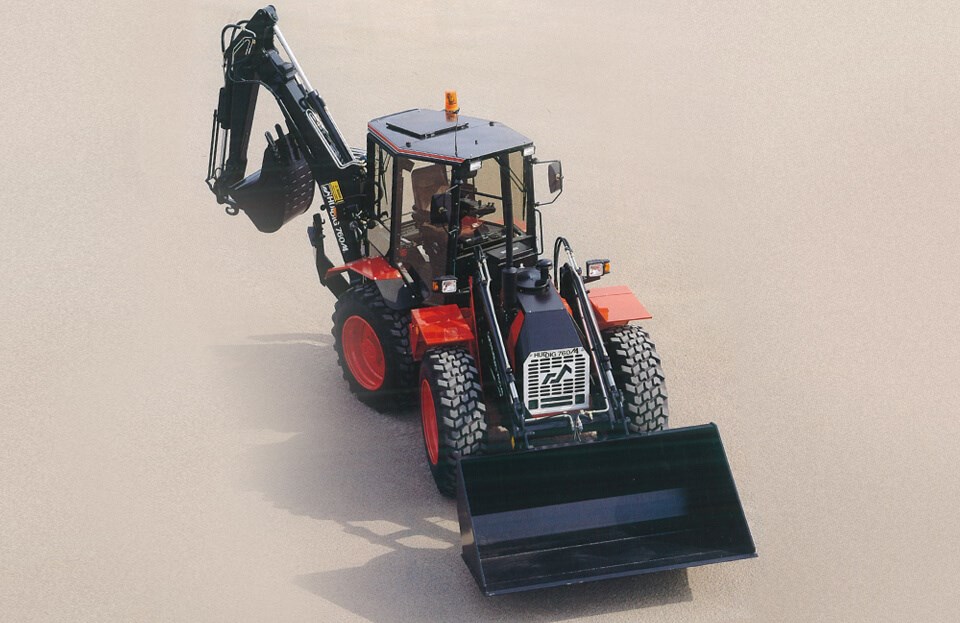Articles
History - The birth of the modern loader excavator
Kjell-Åke Bodell is one of the driving forces behind Huddig's great success. He started his career as a consultant at Huddig (then Hymas) in 1975, and ten years later, he became a Construction Manager. We sat down with Kjell-Åke to do a deep dive among old pictures, newspaper articles, and unknown stories.
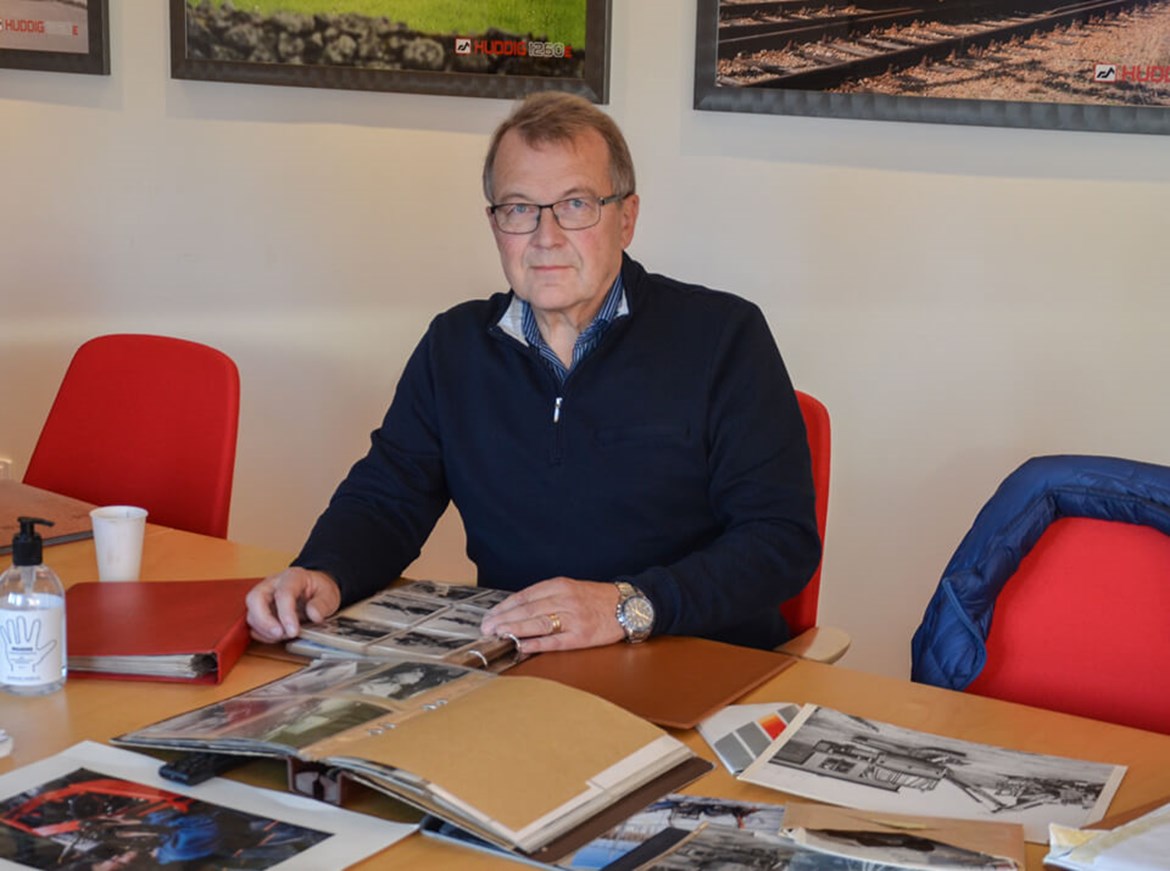
Kjell-Åke Bodell is one of the driving forces behind Huddig's great success. He started his career as a consultant at Huddig (then Hymas) in 1975, and ten years later, he became a Construction Manager. We sat down with Kjell-Åke to do a deep dive among old pictures, newspaper articles, and unknown stories.
"We were a great bunch at the factory. I was employed by the then Construction Manager, Kjell Persson, to produce production drawings for Hyma's LP576 line processor together with Allan Bas. However, our first big challenge was when we were to develop HUDDIG 960, the new generation of articulated loader excavators on the market. Three designers, Allan Bas, Olle Lönnberg, and I, had to concentrate on the new concept. Two of the most important questions were how the oscillation between the front and rear axles should work and what type of transmission we should have."
"We quickly concluded that the oscillation should be at the waist, but we discussed a lot about the design, including whether the oscillation should be in the upper or lower part of the waist. When we had settled those questions, Kjell produced a small, simplified model to illustrate the new waist and its advantages compared to the front or rear axle oscillation. That prototype model is still in our development department. It may not look like much today, but it meant a lot to explain the function to customers and salespeople at the start of the new era of Huddig's loader excavators in the 1980s and onwards."
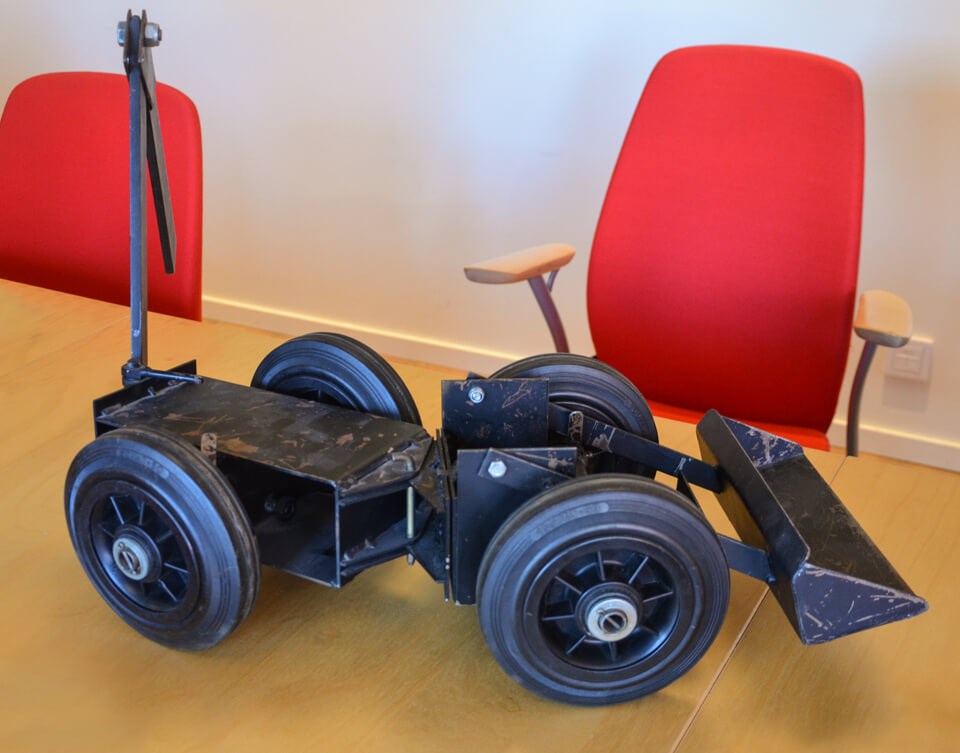
"We had previously equipped our machines with 4-cylinder Valmet engines, but since 1989, we have chosen 6-cylinder Cummins engines. These were not only more powerful - they sounded so much cooler than a 4-cylinder engine as well. I remember a customer in Falköping who told me about seeing another HUDDIG driver pass up a hill with a heavy trailer several times. The strange thing was that the driver was standing on the step in the entry, halfway outside the cab, and driving. The customer wondered if something was wrong with the machine, so he finally approached the driver and asked why he was driving like that. The answer he received was: "Because the engine sounds SO DAMN GOOD when it works hard in going up the hill."
"Regarding the transmission, the big question was whether the machine should have a have a torque converter or hydrostatic transmission. The technical advantages of hydrostatic transmission were clear, but the technology needed to be tested on this type of machine. In retrospect, however, choosing hydrostatic transmission was a stroke of luck."
The success was immediate. Never before had loader excavators had the flexibility and agility of the HUDDIG 960. Around 1140 units of the machine model were sold, and several are still in use on construction sites worldwide. Then, it was time for another model to debut - the HUDDIG 760.
"The HUDDIG 760 was the new and more agile 7.5-ton loader excavator fathered by Kjell Persson. It was equipped with a 4-cylinder Perkins engine and hydrodynamic transmission to work in confined spaces and move quickly between sites."
The HUDDIG 760 was followed by a long line of models - 860, 1060, 1160, and 1260 in multiple versions. The models became increasingly advanced with more powerful engines, accessories, and intelligent solutions. Since 1994, for example, the HUDDIG 960 could be ordered with the first generation of radio control.
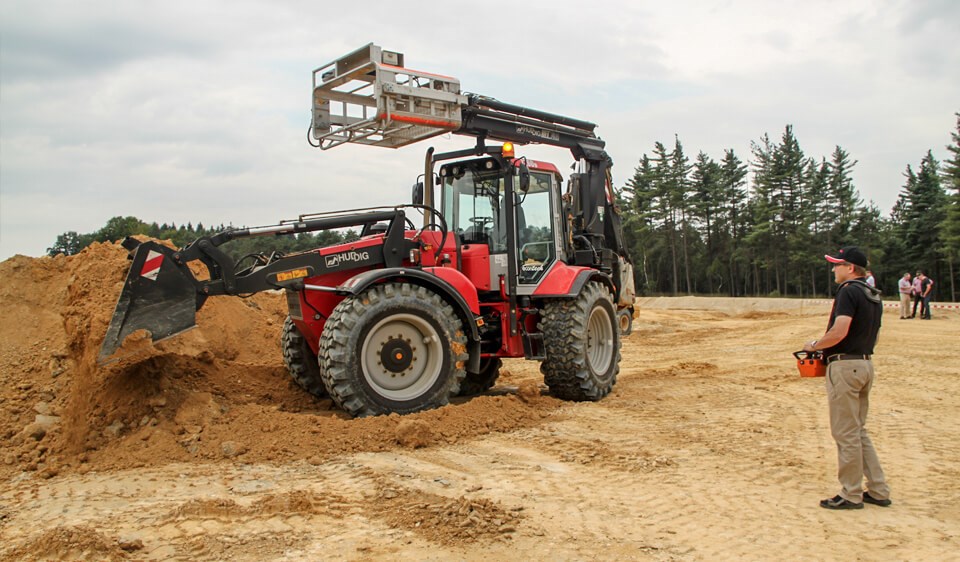
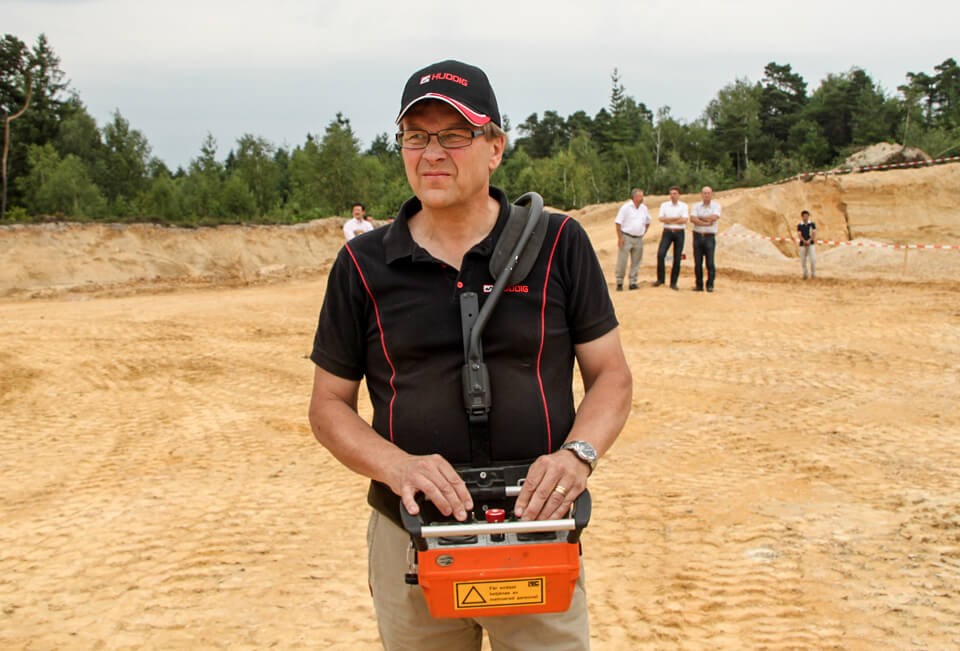
(Photo by Econtech)
"It was a great success when we showed a HUDDIG 960 machine with radio control at the Swedish Fair MaskinExpo that year. I remember that Bengt Mattson, our demo driver at the time, sat outside next to the machine and drove it via the radio control, and everyone who passed by reacted with surprise when they did not see a driver in the cab. However, the control system lived a life of its own and activated the horn on the machine from time to time, which caused some problems when we had to drive the machine away after the fair in the middle of the night. We had talked to the security team from Securitas and decided that they would come and open the gate out of the area when we honked the horn. There were one, two, and three false alarms before we arrived at the gate, ready to drive out."
One of the most notable models from this time was "Muddy Mary" - a specially equipped HUDDIG 1260 with caterpillar tracks.
"The 'Muddy Mary' was the result of a custom order from a customer in Scotland. They wanted a machine with lower ground pressure to cope with the often soft Scottish soil. We collaborated with a supplier in Canada who adapted the tracks, which we then supplemented with caterpillar tracks from Skega in Örnsköldsvik. It was a bit tricky to get everything together, but we got it right in the end. The machine worked perfectly for cable plowing, and we later received further orders from Germany and elsewhere. The model received much attention at MaskinExpo 2009, where many people came up and asked us where we got the name "Muddy Mary." It was simply a nod to one of the most popular drinks back then - the Bloody Mary," Kjell-Åke concludes.
